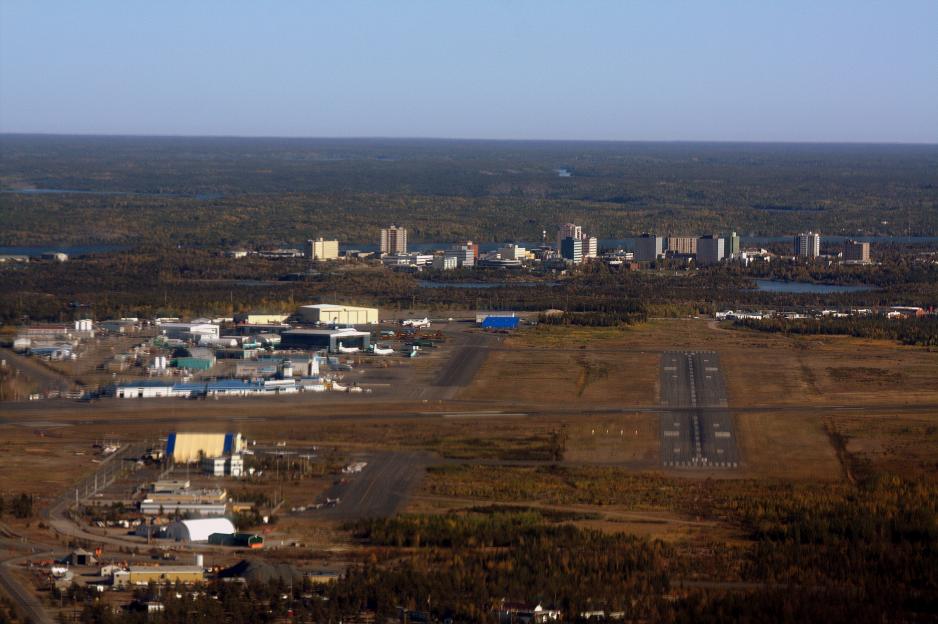Canada’s North is Growing

An overview of Yellowknife, one of the growing cities in the Canadian North, and currently the second largest city in the region. (Photo: Shawn, Wikicommons, https://commons.wikimedia.org/wiki/File:Yellowknife,_NT_(3917572333).jpg)
New data recently released shows that the Canadian North is growing. Canada has been going at a rate of 5 percent, but on average the North is growing faster.
According to information collected in May 2016 the three territories in the Canadian North are growing at an average rate faster than the rest of Canada, with Nunavut leading the way at 12 percent.
This growth has put Nunavut is second place for the territory with the highest population, in front of Yukon, but still behind the Northwest Territories.
At this stage, only population and dwelling counts have been released from the recent Canadian census. With this data, however, it is clear that in some territories people are heading into cities, but the reasons behind the overall increase in population are still fairly speculative. As more information from the census is released in the coming months, such as age and immigration, more informed assumptions can be made.
Background on the Canadian Census
In 2010 Stephen Harper, the previous Prime Minister of Canada, stopped the long-form census in Canada. What this meant is that for several years there was a lack of data being collected from Canadian citizens. This changed in 2016, when Prime Minister Trudeau re-instated the collection of a breadth of data. The first long-form census in several years is now slowly becoming publically available. February saw the release of information on population and dwelling, May will reveal information on the age and sex of Canadians, August will be information about language, families, and household status, September will show income information, October will show information about Aboriginal peoples, housing and immigration, and finally November will disclose information about language of work, labour, education, and journey to work.
Growth of Nunavut
As mentioned the population growth in Nunavut was the highest in the country at 12.7 percent and in large part is likely due to a high birth rate. Iqaluit, the capital, grew at a faster rate of 15.5 percent, which means it now has a population of approximately 7,700. Baffin, unincorporated, which is Canada’s largest census subdivision, covering the Qikiqtaaluk Region and 988,309.38 km2, grew 1,140 percent from 5 people to 62.
Growth of the Northwest Territories
The growth of the Northwest Territories was not only the lowest of the three territories, but also one of the lowest growth rates across Canada at 0.8 percent.
Yellowknife, the capital city in the territory, did increase more than the average territorial rate at 1.7 percent. There were areas that did see a bigger boost in population, such as Deline, the first self-governed community in the NWT, which had a 12.9 percent increase in population.
Growth of Yukon
Data from the population increase in the Yukon has showed that although there is an increase of 5.8 percent, this has largely been in urban centers. In fact, many rural communities have actually seen a decrease in population. Whitehorse, the capital of the Yukon and the largest city in the North, has seen a population increase of 7.8 percent and has now topped 25,000.
Looking at the data, it is clear that Yukoners are centralizing around urban areas. Not only has Whitehorse increased in population, but some of the surrounding areas are also increasing above the territorial average. Mount Lorne, for example, increased by 7.1 percent. While Old Crow, a settlement near the northern part of the Yukon-Alaska border had a decrease of 9.8 percent. Faro, a town north of Whitehorse, has increased, but only slightly at 1.2 percent.
The implications of this population growth will be revealed in the coming months as more of the census is released. Average age of northers, education levels, employment, and ethnicity will all reveal information on the type of society that is continually being formed in Canada’s territories. People talk about there being a “brain drain” in the circumpolar north, and this may still be the case in Canada, even with the population growing, but will only be confirmed or denied as more data is released to the public.
